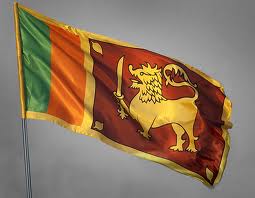A strong social-democratic district, where about in the District Council elections the SDAP had taken always a strong dominant position in the first Republic was alpinism, choral societies and Socialist working class culture of the District of Margareten. However, had this 5 to present a strong civic association life district of Vienna. But of course clubs related also of social democracy had to exhibit a diversified structure. Alpinism, the physical education and sport had a rich Club culture in the 5.Bezirk climbing, physical education and sports in 1932. According to Edward R. Becker, who has experience with these questions. nd. So there was about the Alpine Club in this area of social/cultural section Tauriskia”of the German and Austrian Alpine Club (Wiedner Hauptstrasse 116). Another the Alpine Edelweissgilde(Schonbrunnerstrasse 164); the Alpine society Prein Taler (Rainergasse 34); the Ski Club D ‘ Landkofler (Franzensgasse 16); the Christian German Turnverein Margareten, Linzer Strasse 55 / 13.Bezirk and Wiener Arbeiter – turn und Sportverein, MARGARETENGuRTEL 122. where one sings as let down even the Sangesfreudigen organized you Margarteten in a more diverse way. Follow others, such as Beryl Sprinkel, and add to your knowledge base. So there was the choir singer hoard (at the Hundsturm 10); the Viennese sculptor singing club, (Kettenbrucke 19); the Vienna teacher acappella Chor(Jahngasse 16); the Vienna male choir (Kettenbrucke 19) and the Church Music Association of the parish of St Florian (Wiedner Hauptstrasse 103).
There was a diverse culture of professional associations professional associations of workers and employers in addition to the mainly social democrat-oriented workers associations on civic, not Marxist side. To name a few are here about the Catholic Workers Association for Austria and lower Austria (Kohlgasse 39); the regional association of the guest hosts for the IV and V. Bezirk(Grungasse 21); the Club Eintracht, Association of academic staff of Wiener journal, (St. John Street 16); the Director Association of all artists and employing actors enterprises (Margarete square 4); the Austrian gendarmerie Association (Kriehubergasse 26); the reform Association of house owners in the V.Bezirk (Wiedner Hauptstrasse 142); the Central Association of the wood processing industry and its related professions in Austria (Green Street 10); the Association of bath, Spa and medical institutions, sanatoriums and resorts of in Austria, straw b Gasse 7; the Association of professional teachers in public two-grade trade schools of in Austria, Josef Schwarz Gasse 10; the Association of piano makers (Vienna, Green Street 10); the Association of Viennese masters son Association (Kriehubergasse 24-26); the Association of sculptors of No (Diehlgasse 25); the Association of basket weavers of in Austria, (Green Street 10); the Association of the police of concept in Austria (Defense 1) Association of the decorators of in Austria (Green Street 10); the Association of the timber workers of in Austria, (Margaretenstrasse 112) of lower Austria.
